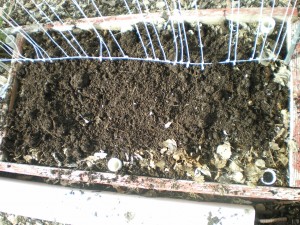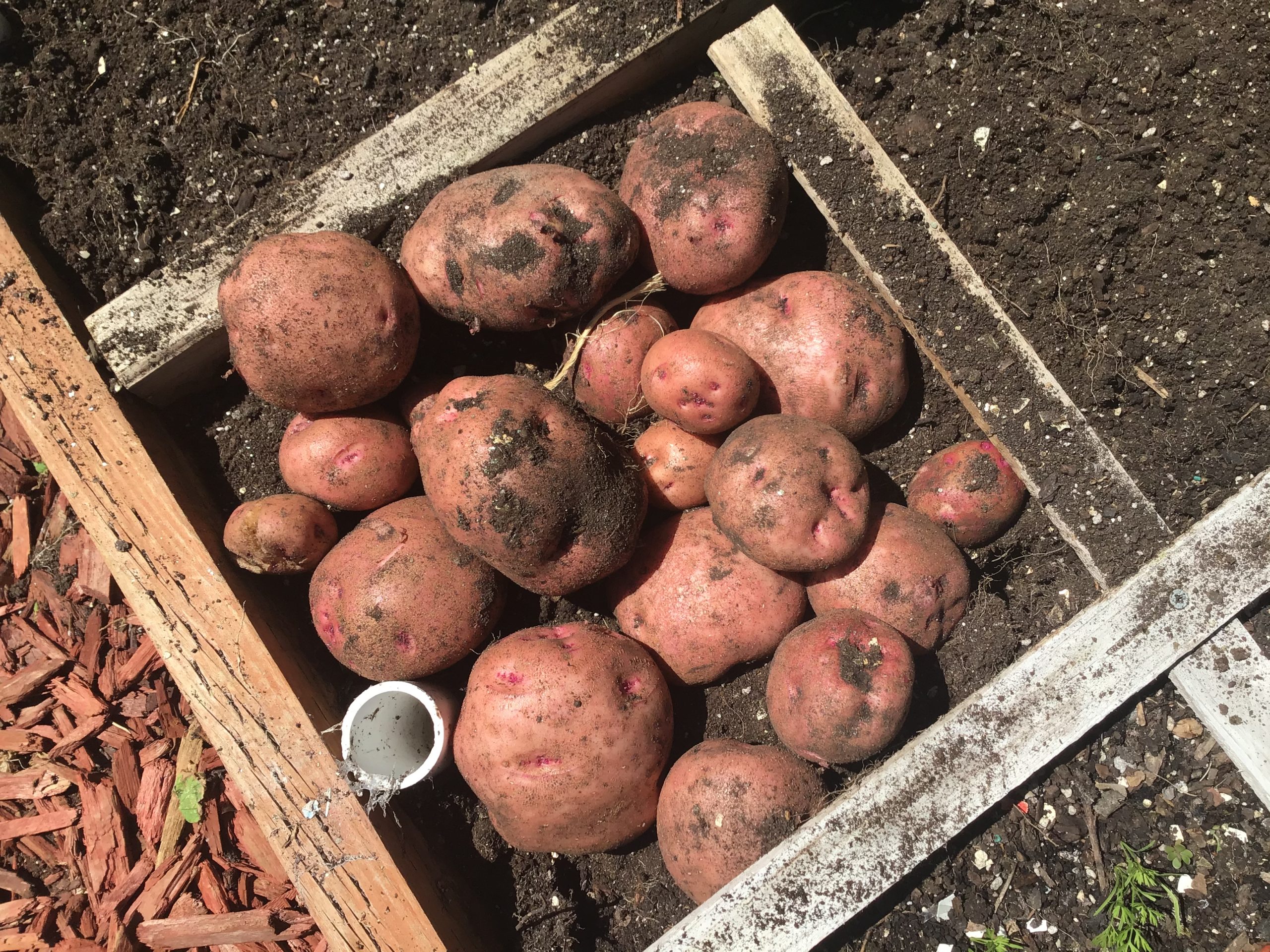I’ve learned that the better you prepare your beds in the fall, the earlier and better your garden responds the next year. Out of my 14 boxes, 6 have been turned over, amended with compost and leaf mold, and are now ready to rest for about 4 months. I always begin by turning the soil over with a pitchfork. It is usually fairly compacted by a growing season of weather, water, etc. It does loosen up nicely and I end up removing part of the soil so that I can amend a little deeper than I do during the growing season. Then, I add leaf mold followed by compost, then put back the soil that I removed earlier. I will then top off the soil with another batch of compost and let it sit for the winter. By the time I start to warm the beds up in the spring, all those leaves will be gone thanks to those great earthworm helpers. If you look close enough you can see a lot of them. Whats left is a perfect growing medium for just about anything you want to do. 
[ois skin=”below post”]


Thank you, Jim. This was very helpful. I just noticed that you were sheet mulching (something I am very comfortable with) and the worms do take care of the sheet mulch for you. I took your advice and left the boxes open underneath after I had removed all the sod from the site. There were still some roots that I couldn’t get from the centipede grass. I hope that 6″ of compost will keep them from re-emerging; however, I’ve known centipede grass to grow up through a wooden planter. If it does, I can always move the box to where my previous years, row type garden is if need be. There is no sod there to contend with. Thanks again for your help.
Glad it helped Steve…I don’t even know what sheet mulching is.
You may have answered this in your ebook, which I am planning on purchasing, but I have a quick question as I am currently installing my first SFG bed. Did you install weed cloth under this bed when you installed it? If so, how are there earthworms in the bed? I would like to install weed cloth to inhibit weed growth, but I would like the benefit of having symbiotic critters in my bed. I want to make sure they can get in there once I have the SFG up and producing. Can you shed some insight on this for me?
Hey Steve…you’ve asked a couple of questions. First, there is no weed cloth under this particular bed. In fact, there is no weed cloth under any of my beds. I do have a 4X4′ vinyl box where I initially used cardboard and that has worked very well. By now, it’s completely decomposed. If you’re just putting boxes on existing soil, I don’t think you need weed cloth. If you’re putting boxes on grass or over soil that has been problematic wtih weeds in the past, then I would probably put down a barrier. Next you asked about earthworms. The two main benefits of earthworms are 1)aeration, and 2)worm-castings. I think it’s important to remember this about Mel’s mix(which is essential). It is loose and friable and is easily turned over with a trowel. You never walk on it. So aeration is not an issue as it would be with a traditional single row garden. Next, worm-castings. This helps in making good compost, but remember that you’re soil is 33% compost already if your using Mel’s mix. This is the reason why you can have a tabletop garden-a SFG with a plywood bottom on top of a table or saw horses-and not have to worry about earthworms. There are no earthworms in a tabletop garden and they grow just fine. The makeup of the soil has all the benefits built-in already that earthworms normally provide. Let me know if that answers your question.